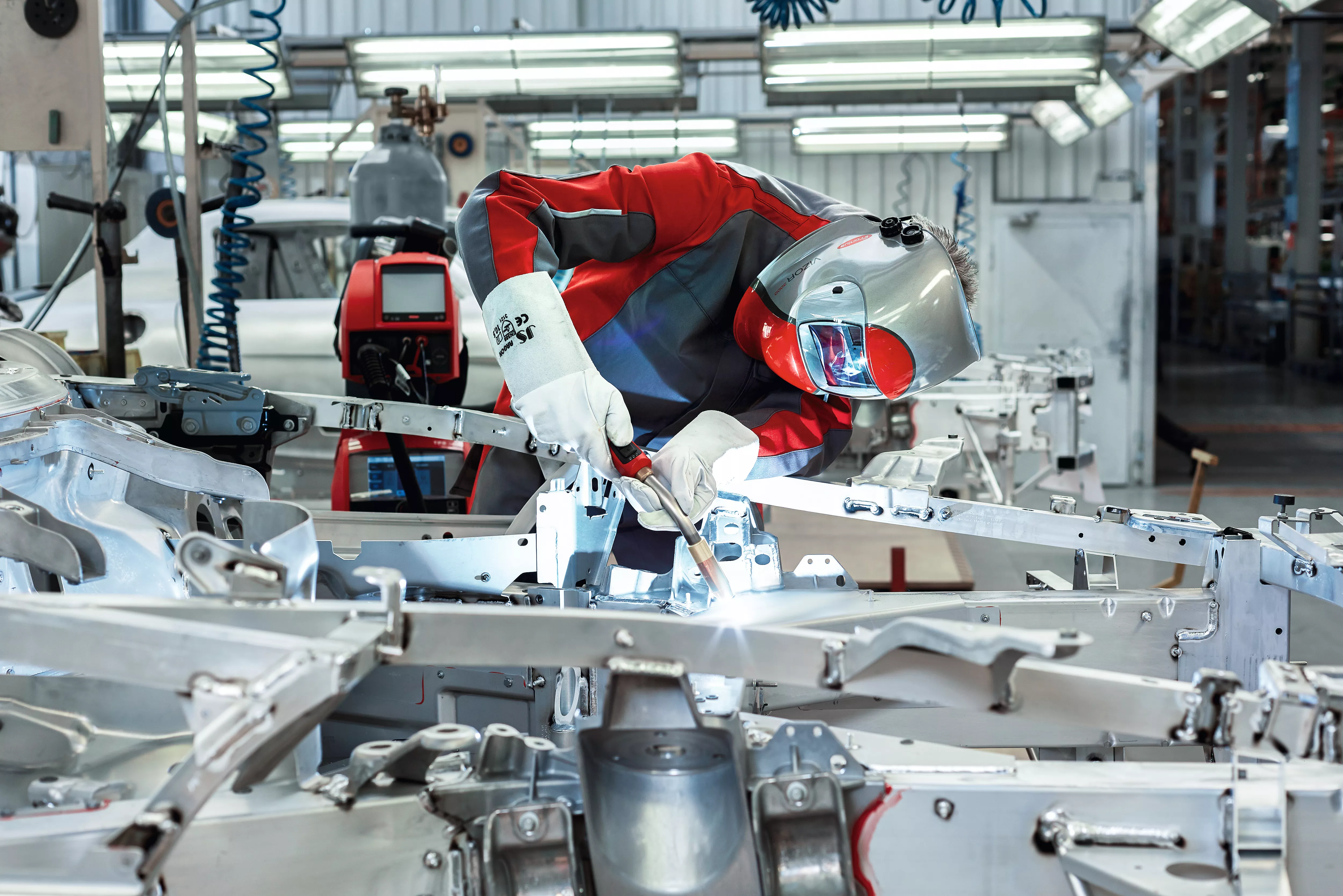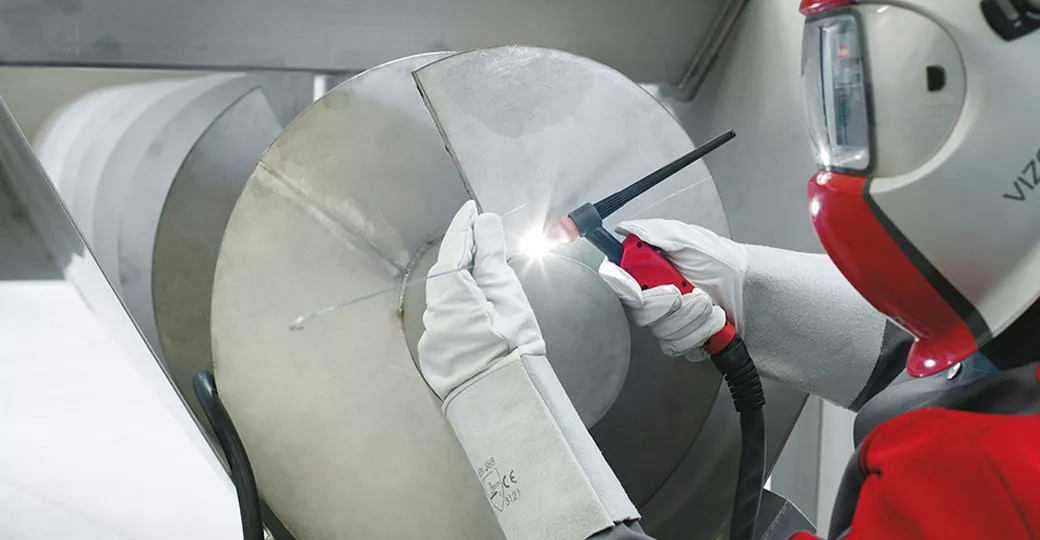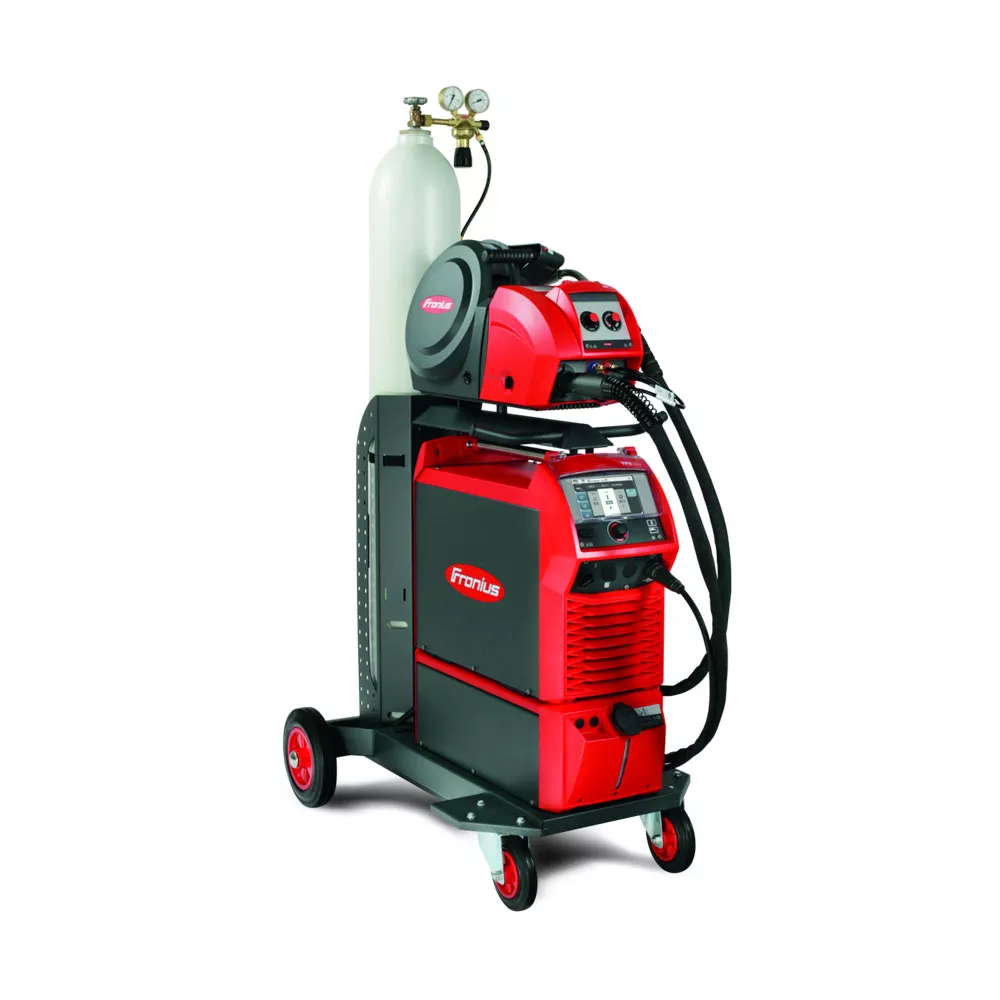Aluminum Welding
Stable Connections, Lightweight

Challenge of aluminum welding
Alongside steel, aluminum is the most widely used construction material. Its biggest advantage is that it is just as strong but only around half as heavy. The use of aluminum is therefore preferred for lightweight constructions.
Interesting facts about aluminum
Pure aluminum (Al99.5) is not very strong. However, it is used as the basis for alloys with a strength that matches up to steel.
Welding aluminum is particularly difficult because the material is surrounded by an oxide layer. This only melts at around 2015 degrees Celsius, while aluminum itself melts at around 650 degrees depending on the alloy. If the oxide layer were to be melted in the conventional manner then the aluminum would run away, and welding would be impossible. It is therefore necessary to destroy or displace the oxide.
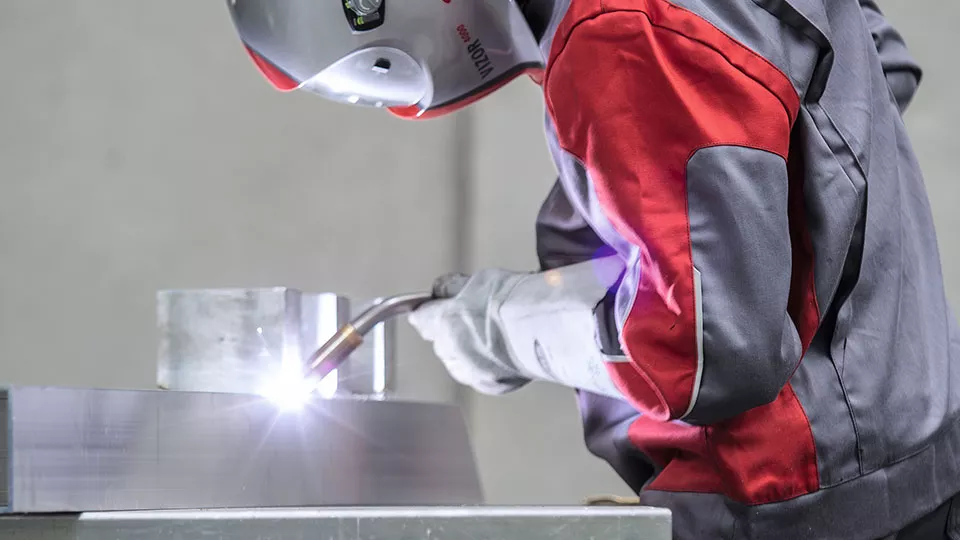
What alloys of aluminum are there?
The properties of pure aluminum can be changed using alloys. For example, adding magnesium considerably increases the strength of the material.
The most important components of aluminum alloys and their properties are:
- Magnesium (Mg)
0.3–7% higher strength, finer grain size - Manganese (Mn)
0.3–1.2% better corrosion resistance, higher strength - Copper (Cu)
roughly 5% higher strength, lower corrosion resistance, important for hardening capacity - Silicon (Si)
12% for casting, reduces the melting point to 577°C, however with coarse grains
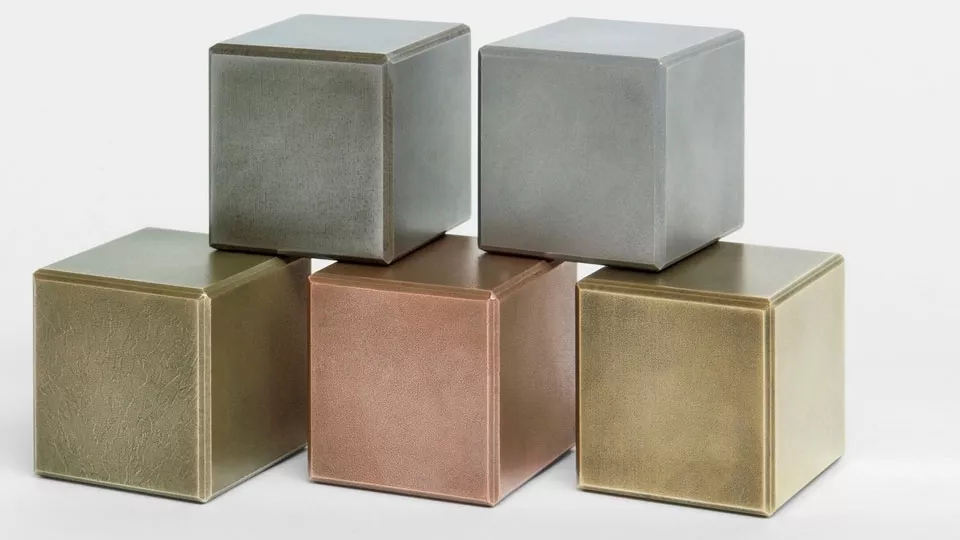
Welding process for aluminum




